Practical Pointers for Getting Your Photos Noticed on Flickr and 500px
![]()
You have just composed your photographic masterpiece. After hours of planning, precise composition, and utilizing your technical knowledge, you have captured the perfect image. It’s now time to share it with the world, but hours after posting your pièce de résistance, you’ve only received a meager two views.
In this article, we’ll be discussing some basic tips for helping you make your work shine and become more noticeable on photo sharing sites.
Establish Titles, Descriptions, and Tags
One of the most important aspects of uploading your photograph is giving it a proper name, along with an informative description and topic-specific tags. Let’s take a look at the example image below. Start with developing a title that attracts attention and is informative. The more detail we can include, the more likely the photo will show up in search results.

Photography is a field of art, so many of us are eager to use one or two-word titles that seem dramatic and ‘channel’ our inner creative. An example of a short title for this photograph may simply be ‘The Butcher’. This is a title that creates a bit of mystery, but it really doesn’t give the site’s algorithm much information for cataloging.
You may think that a ‘less is more’ title with descriptive tags is enough, but the site will sort search results based on what it thinks is most relevant. A photograph that has specific and descriptive keywords within its title, description, and tag is much more likely to be ranked higher by the website’s search engine.
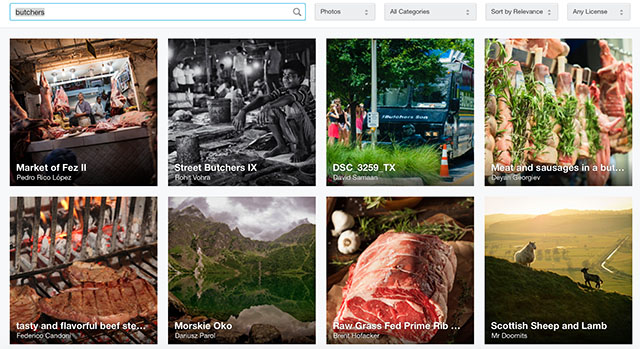
Start by taking a deeper looking at the photograph. Ask the fundamental questions you remember from secondary school: Who? What? When? Where? These questions will help you establish a more suitable and descriptive title. Our example photograph is of a butcher staring at a selection of meats taken a few weeks ago at a local German deli. Let’s start injecting some of this information into the title.
A possible title could be ‘The German Butcher’. This only adds one additional descriptor though, so let’s take a closer look at the photograph. Art is a very emotional subject, so it could help for us to determine an emotion or feeling for the photo. In my opinion, the butcher looks quite sad. This creates a possibly better title: ‘The Sad German Butcher’. We could stop here, but there is also the meat, which is a significant focus of the image. It may not be necessary, but I have adjusted the title to be “The Sad German Butcher and his Meat Shop.”
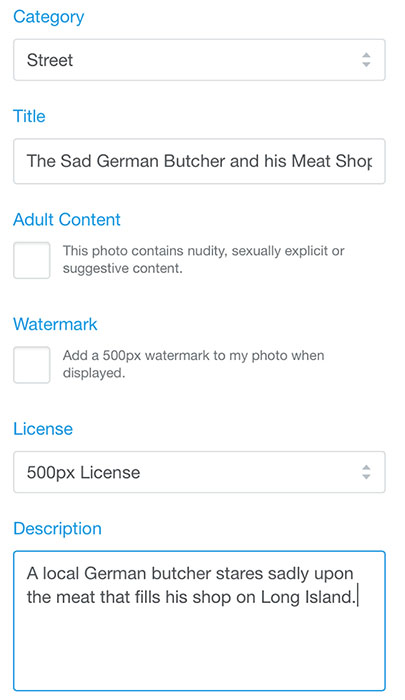
Now we have to craft a description. Don’t be shy here and make sure that you inject the relevant keywords we discussed before. As a result, here is my description: ‘A local German butcher stares sadly upon the meat that fills his shop on Long Island.” Notice that I kept my description short, but included all the relevant keywords: German, butcher, sad, meat, and shop. I have also included the location of the photograph, which can be crucial as people search for images related to a particular area.
Now that we have a title and a description, it is time to establish our tags or keywords. To start, we can use the keywords we established above. Just because they are already included in our photograph’s description and title does not mean we don’t have to include them. Adding these keywords to your photograph’s tags may help its rank within the site’s search engine.
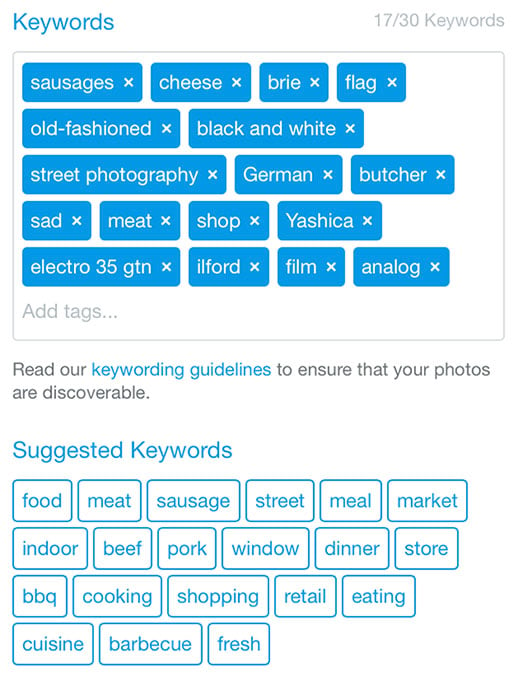
After you have entered the keywords we worked on before, begin analyzing your picture for secondary subjects that would broaden the possibilities of your image showing up in a query. By examining the example photograph I was able to come up with several more tags: sausages, cheese, brie, flag, old-fashioned, black and white, street photography. We may have mentioned ‘meat’ already, but don’t forget synonyms or more descriptive terms.
Lastly, many people have an interest in the gear that was used to capture a photograph. For this reason, we should also add the following to our tags: Yashica, electro 35 gtn, ilford, film, analog. You may be surprised at how many views these tags would garner alone.
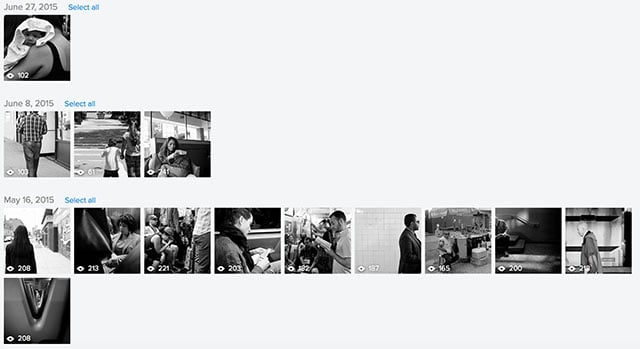
Congratulations, you have just made your image much more discoverable for people searching out photographs. But what about people who aren’t actively searching for a specific subject? For that, we turn to other techniques.
Join Groups and Communities
You don’t need to pay for advertising to have your photograph appear in front of people’s eyes. Simply utilizing existing groups and communities, you can target the perfect audience without spending a dime. Let’s begin by talking about the built-in groups we see on sites such as Flickr, and then we will discuss your new best friend in social networking.
Sites such as Flickr and 500px want you to stay around and continue to use their services long after you are done uploading a photograph. The more page views they can amass, the more money they generally make due to advertising (for Flickr, at least. 500px doesn’t have ads at this time); this is why many websites have created communities for their members to discuss aspects of photography.
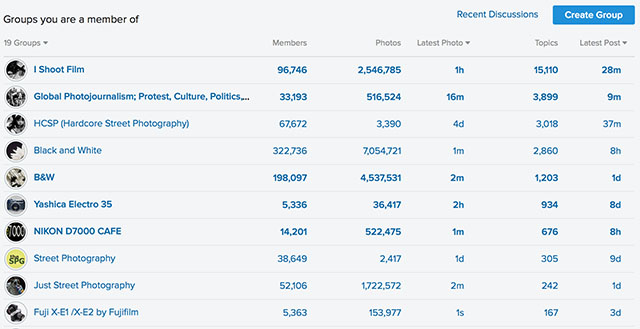
Begin by joining every community you can think of that is relevant to your work; remember to include locations, equipment, styles, etc. As an example, for this photograph I performed a search on Flickr and decided to join the following groups: Yashica Electro 35, I Shoot Film, Global Photojournalism, Hardcore Street Photography, Black and White, B&W, Street Photography, Just Street Photography, The Butcher Shop, Long Island Shots, Long Island Photographers, and German Food Culture.
Don’t be afraid to join a large number of groups. The more groups you join and contribute to, the more your photograph will be discovered. On some sites, you can even sort groups by member number — so take note and join larger collectives. The more groups, the more eyes, the greater the exposure.
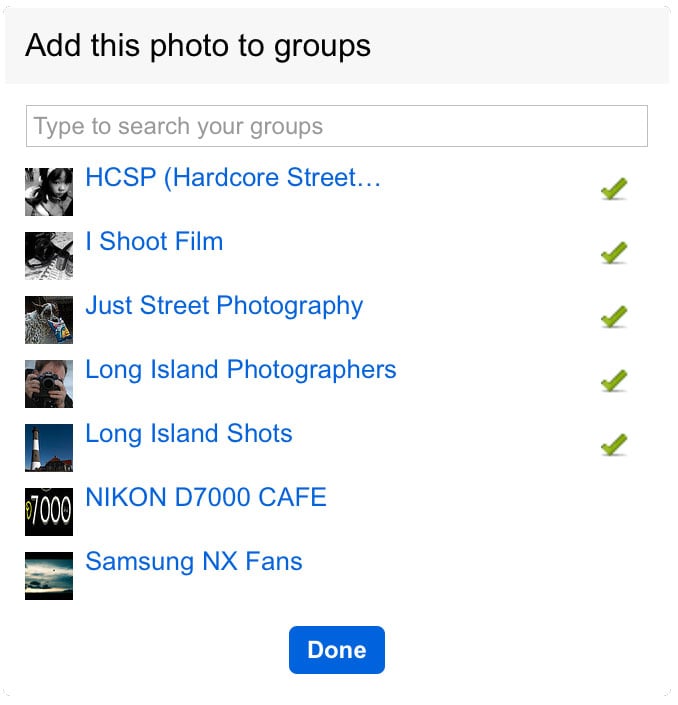
Sharing your photographs does not stop at photography-focused networks. Now let’s head out to other platforms to increase your Internet presence. Our top pick, which may surprise you, is Google+. That’s right. It’s the social network platform that everyone seems to forget about but remains one of the best for getting your photographs discovered.
Social networks rely on building connections with people and the most important people in your lives are most likely your friends and family. Thus, if your friends and family aren’t active on a social network there doesn’t seem to be a reason to stay. However, the strength of Google+ is hidden within its ‘communities.’
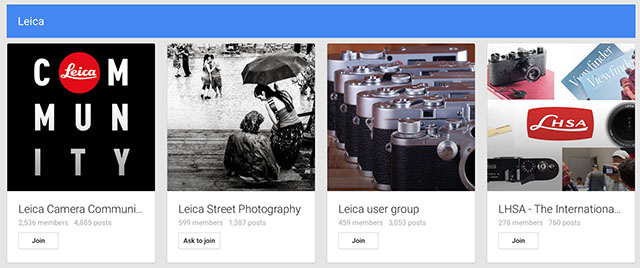
Google+ communities let you join groups that focus on particular areas of interest, just as your favorite photo site allows. You may be surprised at how active some of these groups are. Take a look at Google+ and join a few of their communities. By contributing and commenting to communities and photographers on Google+, the more it becomes an asset to your portfolio.
Include That Exif Data
As we mentioned before, some people are interested in discovering photographs based on the equipment that shot them. For this reason, it is important to ensure that your EXIF data remains embedded within your uploads. Sites such as Flickr now allow users to search by specifying an exact camera model along with particular aperture, shutter-speed, ISO, or focal distance settings.
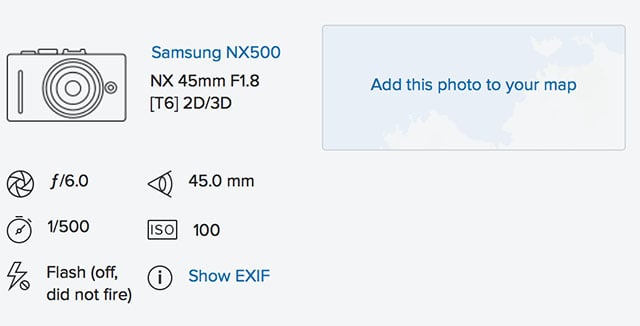
For privacy reasons, some photographers choose to modify the EXIF data so that location information is removed. However, we recommend not deleting the data completely if it can be helped as many searches are aided by the location where the photograph is taken.
In conclusion, making your photos more visible on services such as Flickr and 500px is a lot like making your website rank higher on search engines through SEO. Pay attention to how and where you share your photos, and you could be on your way to luring more eyeballs to your photos.